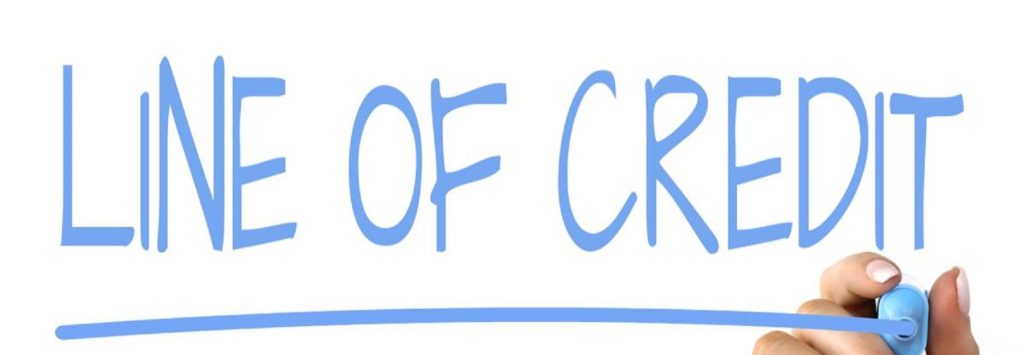
Once you get a deed to your own home, you have special wealth-building powers. Pay off the mortgage faithfully month by month, and you own increasing home equity. This is how your home turns into value you can tap when you need or want it.
A home equity line of credit (HELOC) gives you an account to tap for ongoing or surprise expenses —costs like tuition, medical or accessibility needs, starting a new business, or anything else you’d like to pay for without putting debt on a credit card. You use your home equity as collateral. This means banks offer interest rates as low as 9%. That’s a lot lower than credit card rates.
While HELOC rates might start off seemingly low, they can turn into trouble.
Know Your HELOC’s Rate Cap
With the flexible features of the HELOC, funds can be drawn and spent as needed, paid back to replenish the balance, then drawn again. So, the credit line remains open and available until the homeowner asks for it to be closed. (As with a credit card account, HELOC credit does not have to actually be used. But whether or not the homeowner taps the funds, the HELOC is still recorded on the home.)
A HELOC might start with a teaser rate to catch customers’ attention. That’s an attractively low opening interest rate that lasts for a certain length of time — perhaps one year. Later, the interest rate rises. It can change with the prevailing bank rates.
The lender must give advance notice when it’s changing the interest rate. But the best way to avoid being caught off guard? Know the limit — the cap to the rate the lender may charge. Have your finances planned so that you can manage to pay that much.
Know your rate cap. It might be higher than you think!
A HELOC Is Like a Credit Card — Only It’s Secured by a Home
We all know how difficult credit card debt can be, once a borrower is in deep. And with a HELOC, a lender that doesn’t get repaid can go for the struggling borrower’s home. This is because the line of credit is actually recorded in the county as a second mortgage. So there’s a lien on the home to represent the HELOC.
Before taking out a line of credit, ask:
- Can I really afford the risk of variable-rate credit, especially in today’s unpredictable economy?
- What fees will I have to pay?
- Do I have to pay a penalty if I pay off some of the loan principal ahead of schedule?
- Will I have to come up with a large “balloon” payment at the end of the HELOC’s term?
It’s best to know the terms of a HELOC before signing up for it.
Before even beginning an application, know that variable-rate debt can be crushing — and with a HELOC, a home is at stake.
If a HELOC Means Borrowing Against Home Equity, What If the Property Value Goes Down?

This is a separate issue from interest rate hikes, but it’s another potential change that you don’t want to encounter by surprise.
At this time, homeowners are sitting on massive amounts of home equity. But what if:
- Something happens to the home values in your area during the term of a line of credit, and you no longer have as much collateral as you did at the start?
- Your personal credit profile takes a hit, so that you’re no longer deemed eligible for the HELOC of the amount originally issued?
First, the equity line is already structured with a built-in buffer. It doesn’t extend credit on the entire appraised home value. But you might take on as much as 85% of your equity into credit. So if the home value (or your personal credit score) takes a serious nose dive, there could be an issue.
The lender could call and say it will stop extending you credit (or lower the credit limit) on the HELOC due to a decline in the property’s value.
As the lender will inform you, you’re free to appeal this action and see if the lender will make a new determination. But who has to pay for a new HELOC home appraisal, or an updated personal credit check? The homeowner does.
Now for the other side of the coin. A HELOC can be a way to force the value of a property upward. That’s because a homeowner can use it in order to improve the property. That can even earn the homeowner a tax deduction! Plus, the interest payments on a HELOC are deductible for those who itemize deductions on their tax returns.
☛ HELOCS are gaining in popularity as interest rates rise. That’s because fewer homeowners want to swap out their existing, low-interest mortgages for cash-out refinancing. Of course, homeowners with home equity to tap could also consider a fixed-rate, lump-sum home equity loan (HEL) to fund their goals.
What Happens to the Homeowner When HELOC Payments Become Overwhelming?
Yes, it’s important to ask that what-if question. Homeowners can lose their homes to foreclosure for failing to make their HELOC payments.
If a HELOC’s rate soars, as variable rates can do, the account can become overwhelming. Assuming there’s no penalty for early payoff, borrowers may need to put all their energies into paying off the HELOC, to get out from under that high interest responsibility.
Remember, during the first five or ten years with a HELOC, the homeowner can draw against the credit line. Then comes the repayment period. Time’s up for borrowing against the account. The repayment period for principal and interest can be two decades long.
During any time the borrower pays interest only on the line of credit, the loan does not get paid down. Interest-only means extending the life of the loan. That’s great for a bank, not for the borrower. Keep paying off principal to pay debt down!
Finally, there’s the official termination point. This is where it’s critical that the borrower has saved enough, anticipating full repayment of what the homeowner has borrowed. No lender will release the lien from the county records until the HELOC is fully paid back, and officially closed out.
Our takeaway? The HELOC is one financial tool available to you as a homeowner. But be careful it doesn’t get the upper hand.
Please note that Deeds.com is not a financial adviser. Do you have questions on financing through a HELOC or other financial product? Speak with your mortgage consultant for situation-specific answers and guidance.
Supporting References
U.S. Department of the Treasury / Office of the Comptroller of the Currency (OCC) via HelpWithMyBank.gov (an official website of the federal government): Variable Rate Home Equity Line of Credit (last reviewed Apr. 2021).
Discover® Home Loans, by Discover Bank, via Discover.com: Home Equity Loans & HELOCs – How to Get a Home Equity Loan – 11 Terms to Know.
Deeds.com: HELOC – How Home Equity Lines of Credit Impact a Home’s Title (Jul. 30, 2020).
Deeds.com: Need to Pull Money Out of Your Home? Which Will Work – Home Equity Loan, or HELOC? (Jun. 9, 2023).
And as linked.
More on topics: Home equity value, market value
Photo credits: Nick Youngson, via Blue Diamond Gallery / alphastockimages.com (CC BY-SA 3.0; image cropped for page banner); and Beyzaa Yurtkuran, via Pexels.
